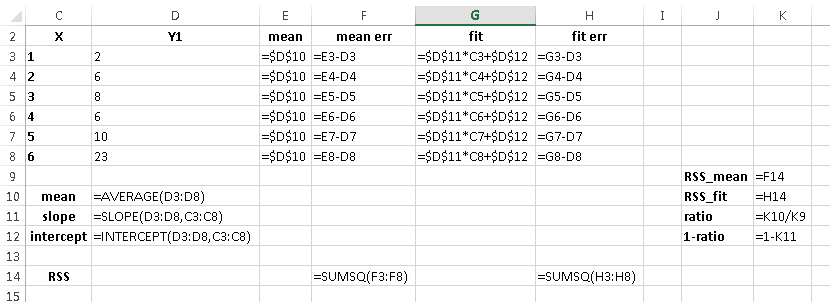This is a first attempt at an answer.
Source
I used your data for X, Y1, and Y2.
X Y1 Y2
1 2 1
2 6 7
3 8 9
4 6 5
5 10 12
6 23 18
There is a 1:1 relationship here. A particular value of X, gives particular values of Y1 and Y2. The Y values can be thought of as a single point located in a 2d space. $Y=\left[ y_1,y_2 \right]$
Procedure:
- enter the data into excel (excuse any typos)
- compute the mean, slope, and intercept using normal methods
- compute error between mean and actual for each row
- compute error between linear fit and actual for each row
- compute sum of squares for the mean-error column
- compute sum of squares for the line-error column
- compute the ratio of the sums in steps 5 and 6
- subtract that value from 1, and compare to the provided R^2
Results from approach is shown here:

Compute of ratio for RSS shown here:

Graph of data shown here (yes, y1 label is poorly placed):

If you have a column of error, and a mean value of the target, then you can compute a Pearson R^2 statistic.
Some relevant references:




